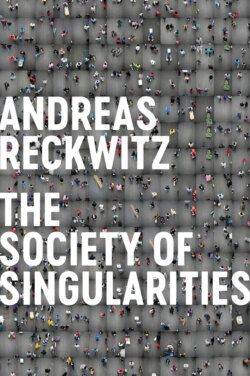Читать книгу Society of Singularities - Andreas Reckwitz - Страница 32
Organized Modernity: Mass Culture
ОглавлениеOrganized, industrial modernity, which extended from around 1920 to the middle or end of the 1970s, represents a breach within modernity itself. In its socialist instantiation, it was aggressively anti-bourgeois and anti-Romantic. Its lasting influence, however, derives from its Western version, which was largely propelled by the United States and its combination of Fordism and Americanism. As we have already seen, industrial modernity represents the zenith of the modern process of formal rationalization, with its expansive social logic of the general. It would be one-sided, however, to reduce it to that alone, for it also caused its own shift with respect to culturalization, especially in the fields of consumption and audiovisual media. Bourgeois-Romantic culture did not vanish entirely; instead, it was fundamentally subordinated to the social logic of the general in such a way that, from the perspective of bourgeois cultural traditions, little seemed to remain beyond anti-individualistic mass society.
Fordism was based on mass production and mass consumption alike. In the 1920s, the world of consumption began to develop into a new cultural sphere. In short, a consumption revolution took place.13 Goods, which had previously served instrumental purposes above all, were now increasingly subjected to culturalization – that is, they started to become narrative, aesthetic, expressive, or ludic ends in themselves. Consumption drastically broadened the scope of culture and its processes of valorization beyond the confines of bourgeois art and education. The central point is this: in that goods were now currying the favor of consumers within a commercial market constellation, culture was no longer tied to the state but rather to the economy. Here, in individual segments, it is already possible to observe mechanisms of cultural innovation and differentiation that resemble something like a “fashion cycle.”14 That said, organized modernity posed two limitations. On the one hand, the culturalization of the world of goods was quite limited in comparison to the situation to come in late modernity. Most goods primarily served instrumentally rational purposes or the social function of preserving status. On the other hand, the value of these objects as singular entities was often limited. Given the influence of Fordism, they were mostly standardized, and in this sense we are dealing here with a mass culture.15 Even the consuming subject in organized modernity was not concerned with being distinct but rather with demonstrating his or her general normality: the ideal model was that of “keeping up with the Joneses.”16
Within the framework of this post-bourgeois culture, audiovisual media acquired a specific status. This was especially true of movies, which became the center of what came to be called the culture industry.17 In the case of films, the new field of consumption intertwined with the old field of art. Films are clearly culturalized goods with both narrative-hermeneutic and aesthetic qualities. At the same time, every film promises something non-interchangeable and different, so that a system of valorization formed around them to gauge their value and appeal. In the cinematic sphere, the regime of aesthetic novelty, which constantly demands new originality and surprises, is even more prevalent than it is in bourgeois art. The social field of the film was pioneering to the extent that, as of the 1920s, it established a broad and hypercompetitive market around a cultural good whose respective value is uncertain and contentious.
To a certain degree, the culture industry also promoted the singularization of subjects, and especially in the form of “stars” (it would not take long, however, for such people to be denounced for their “prefabricated” nature, which did not meet the standards of bourgeois culture).18 All typecasting aside, it remains true that if a star wanted to have any power of attraction, he or she would have to be regarded as unique. In a sense, the star thus inherited the role of the artistic subject. Both cases involve the social recognition and glorification of subjective singularity, though now it was not a matter of a unique work of art but rather the performance and glamor of subjects themselves. Throughout organized modernity, the star remained an exclusive and inimitable figure who stood outside of the reality of the leveled middle-class society.
Organized modernity thus carried out its own shift in the nature of culturalization. Whereas the culturalization of bourgeois society was one of intensifying culture through the bourgeois and Romantic practices of art and education, the culturalization of organized modernity entailed the extension of culture – that is, its large-scale dissemination through consumption and mass media. Whereas bourgeois intensification was related above all to the aesthetic-hermeneutic inner world of subjects, the Fordistic extension of culture was primarily directed toward the visual surfaces of subjects and objects.
